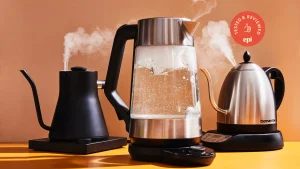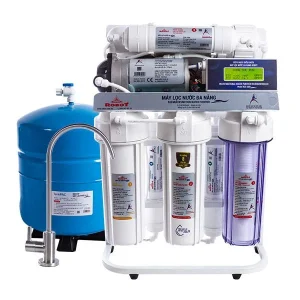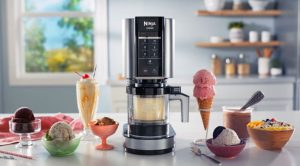Oven: What Is It? How It Works, Applications, and Safe Usage Tips

An oven is a household appliance used for baking, roasting, and heating food. It is a versatile kitchen essential, allowing users to cook a wide variety of meals, from baked goods to casseroles, meats, and more. In this article, we’ll explore what an oven is, how it works, its common applications, and safety tips to ensure safe and efficient use.
1. What Is an Oven?
An oven is an enclosed, heated appliance used for cooking or baking food. The heat inside the oven is generated by electricity, gas, or other heating elements. Ovens are commonly used in kitchens worldwide and are essential for preparing a variety of dishes.
Types of Ovens:
- Conventional Ovens: These are traditional ovens that use either gas or electricity to generate heat. They have heating elements located at the top and bottom of the oven.
- Convection Ovens: Convection ovens use a fan to circulate hot air throughout the oven, ensuring even cooking. These ovens are great for baking, roasting, and even dehydrating food.
- Microwave Ovens: These ovens use microwave radiation to heat food quickly. While not suitable for baking, they are perfect for reheating food or cooking certain quick meals.
- Toaster Ovens: Smaller in size, toaster ovens are perfect for toasting bread, baking small portions, or reheating leftovers.
- Steam Ovens: These ovens use steam to cook food, preserving nutrients while enhancing the flavor and texture. They are often used in professional kitchens.
- Double Ovens: Double ovens provide two separate cooking spaces, allowing users to cook different dishes at different temperatures simultaneously.
Uses of Ovens:
- Baking: Ovens are ideal for baking bread, cakes, pastries, cookies, and other baked goods.
- Roasting: Ovens can roast vegetables, meats, and poultry, giving them a crispy exterior and tender interior.
- Grilling and Broiling: Some ovens come with a broiler feature, allowing you to cook food under direct heat for a crispy texture.
- Reheating: Ovens are excellent for reheating leftovers, providing more even heat compared to a microwave.
2. How Does an Oven Work?
The working principle of an oven is quite simple: it heats the air inside the cooking chamber and then transfers that heat to the food. The method of heating can vary depending on the type of oven.
Key Components of an Oven:
- Heating Elements (Electric or Gas): In electric ovens, the heating elements (located at the top and bottom) are responsible for generating heat. Gas ovens, on the other hand, use a gas burner to produce heat.
- Thermostat: The thermostat is responsible for regulating the temperature inside the oven. It ensures that the heat stays consistent, providing an even cooking environment.
- Fan (in Convection Ovens): The fan in convection ovens circulates hot air to ensure uniform heat distribution, speeding up the cooking process.
- Oven Door and Seal: The door of the oven is typically made of heat-resistant glass, and it’s sealed tightly to prevent heat from escaping.
- Control Panel: The control panel allows users to adjust the temperature, cooking time, and settings. In modern ovens, this can include digital screens, timers, and preset cooking modes.
The Cooking Process:
- Heating the Oven: When you turn on the oven, the heating elements or gas burner begin to generate heat.
- Heat Transfer to Food: The hot air inside the oven heats the food through conduction (direct contact) and convection (air circulation). The food absorbs this heat, cooking it evenly.
- Maintaining Temperature: The thermostat ensures the oven remains at the desired temperature throughout the cooking process.
3. What Are the Applications of Ovens?
Ovens are incredibly versatile and used in various contexts. Here are some common applications:
Residential Use:
- Baking: Ovens are commonly used in home kitchens to bake cakes, cookies, bread, and other pastries. They also allow users to cook casseroles and other oven-based dishes.
- Roasting: Roasting vegetables, meats, and poultry is one of the primary functions of an oven. The dry heat of the oven caramelizes the food, enhancing its flavor and texture.
- Reheating: Ovens can be used to reheat leftover food or frozen meals without losing quality, unlike microwaves that can sometimes make food soggy.
- Cooking Large Meals: For families or gatherings, ovens are ideal for cooking large quantities of food, such as roasting a whole turkey or baking multiple trays of cookies at once.
Commercial Use:
- Restaurants and Bakeries: Ovens play a crucial role in professional kitchens, used for baking breads, pastries, and other food items at a large scale.
- Catering Services: In catering, ovens are essential for cooking large batches of food, including meats, vegetables, and desserts.
- Food Production: In food factories and processing plants, ovens are used for large-scale cooking, baking, and processing of pre-packaged meals.
4. How to Use an Oven Safely
While ovens are relatively safe, it’s important to follow certain precautions to avoid accidents and ensure safe operation. Here are some tips for safe oven use:
Installation and Setup:
- Proper Placement: Ensure that your oven is placed on a flat, stable surface, with enough space for proper ventilation. Keep flammable materials away from the oven.
- Electrical Safety: Always plug your oven into a properly grounded electrical outlet. Avoid using extension cords or overloading circuits.
- Gas Safety (for Gas Ovens): If you have a gas oven, make sure the gas connection is secure and there are no leaks. Periodically check the burner and ignition system for proper functioning.
During Cooking:
- Use Oven Mitts: Always use oven mitts when handling hot items, as oven doors, racks, and pans can become extremely hot during cooking.
- Avoid Overcrowding: Do not overcrowd the oven with too many items, as this can restrict airflow and result in uneven cooking.
- Keep the Oven Clean: Regularly clean the oven to remove food splatters, grease, and burnt food. This will prevent odors and maintain optimal cooking performance.
- Avoid Opening the Door Frequently: Opening the oven door during cooking can cause heat to escape, which can affect cooking times and temperatures.
After Cooking:
- Turn Off the Oven: After using the oven, always turn it off and allow it to cool before cleaning. Some ovens have an automatic shut-off feature.
- Clean the Oven: Clean the oven regularly to maintain its efficiency. Use oven-safe cleaners and avoid using harsh chemicals that could damage the interior.
General Safety Tips:
- Supervise Children: Always supervise children around the oven to prevent accidents. Teach them how to use it safely if they’re old enough.
- Watch for Hot Surfaces: Be aware of hot surfaces inside and outside the oven, especially when removing food or adjusting oven settings.
Conclusion
An oven is an indispensable kitchen appliance that offers versatility and convenience, whether you’re baking, roasting, or reheating meals. Understanding how an oven works, its different types, and its applications can help you make the most of this essential tool. By following safety guidelines and using the oven responsibly, you can enjoy delicious meals while minimizing the risk of accidents.
Whether you’re a beginner or a seasoned cook, an oven will continue to be an important asset in your kitchen, enhancing your cooking experience with speed and efficiency.







